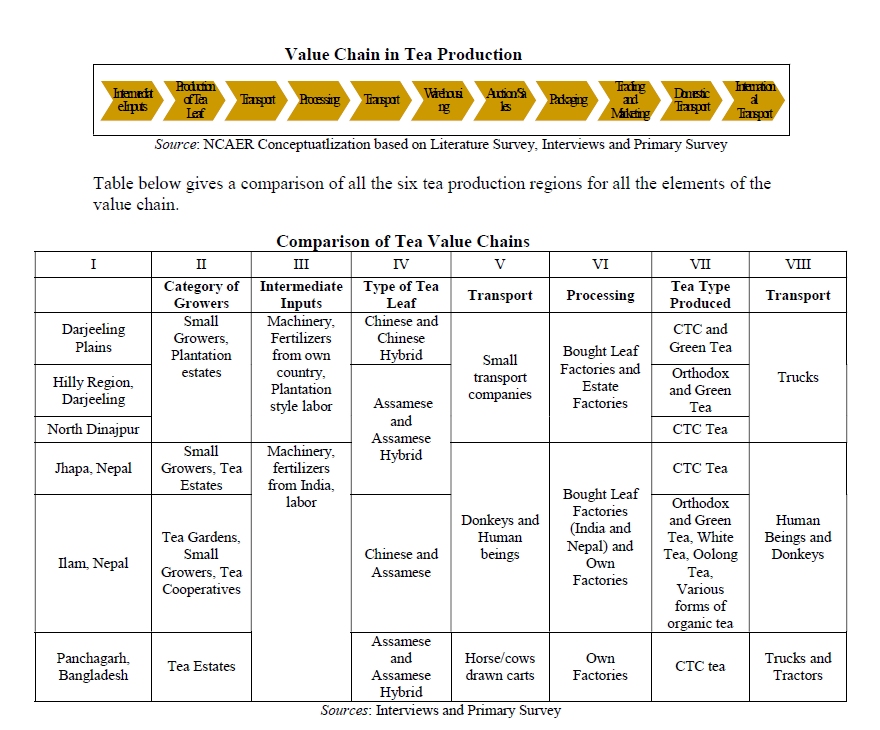Analysis of Border Regions Competitiveness and Connectivity in India, Bangladesh and Nepal
Bornali Bhandari
Aradhna Aggarwal
Lekshmi R Nair
The goal in this paper is to correct growing regional imbalances within India. One way of doing that was to integrate some of the more remote border areas with neighbouring areas in other countries. . Darjeeling borders Illam and Jhapa, the centres of tea production in Nepal. In Rangpur divison of Bangladesh, Panchagarh district produces tea which neighbors Uttar Dinajpur, one of the poorest districts in North Bengal. We study the five districts for possible competitiveness, clusters in the region and its state of infrastructure (transport, energy and water). We examine whether there is any potential to develop value chains across the region. If one uses standard economic theory there is little chance of regional integration between the districts because the regions are producing the same “homogenous” product. The question we asked in the beginning was whether value chains can be developed. The answer is yes and no. Value chains in the standard South East Asian manner cannot be developed because of the nature of the product and just-in-time production cannot take place with the current border constraints. Trade in intermediate inputs and services can help the poorer districts of South Asia to uplift themselves.
Trade, Technology and Skills
Trade
Analysis of Border Regions Competitiveness and Connectivity in India, Bangladesh and Nepal







